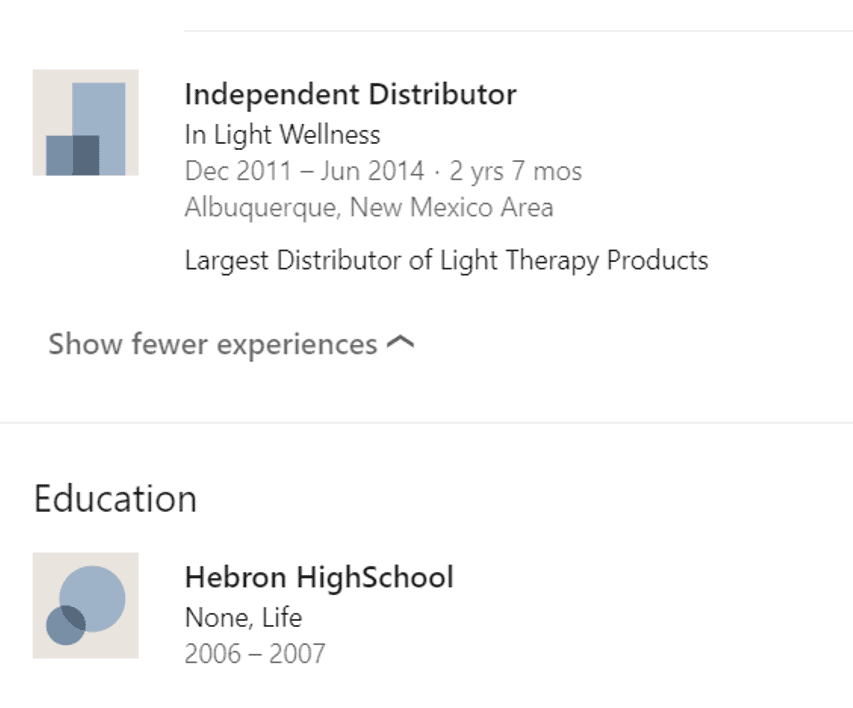FDA Confirms Position Against Birth Tissue Medicare Q-code Billing

Credit: Shutterstock
You may be wondering why I’m spending so much time blogging about Medicare Q-codes and shady birth tissue vendors. Simply put, because it’s easily the biggest story in Regen Med of the decade. This could also be one of the biggest potential Medicare fraud recoveries in the history of the program. This past week it got way more interesting when the head of FDA CBER made it crystal clear that they were in the process of dismantling this house of cards. Let’s dig in.
Medicare, Birth Tissues, and Q-Codes
If you’ve never read about what I consider a massive billing scam, take a few minutes and watch my video below to catch up:
To quickly summarize we have birth tissue manufacturers who got a billing code (Q-code) in a Medicare rubber-stamp session and that are facilitating physicians to bill Medicare for the use of birth tissues to treat orthopedic problems. This is despite the fact that Medicare guidelines clearly do not support coverage for this indication. Why is that a big deal? Because fraudulently billing Medicare is a federal offense that carries 10 years in prison for each bill submitted.
How Big a Deal is This?
Early on in this scam, I was contacted by Medicare Fraud and Abuse contractors whose job it is to identify and prosecute this sort of stuff. They had already begun an investigation but wanted to know what I knew based on my blogs on this topic. They confirmed that Medicare was paying these claims in error.
Recently, from a back of napkin calculation, I think that by the time this mess gets cleaned up, there could be a billion or more dollars in government funds that have been incorrectly paid to providers for birth tissues used to treat orthopedic problems. Yes, that’s Billion with a “B”. So this is a VERY BIG deal.
Who Regulates Birth Tissues?
After a number of scathing letters and a public warning from the FDA that selling birth tissues like amniotic fluid or umbilical cord Wharton’s Jelly for orthopedic use is illegal and requires a full drug approval (which none of these companies have), one company has come up with a new public position that it’s actually CMS and Medicare that regulate the sale of the tissues they sell.
I have been seeing this new position evolve over the last few months. It’s basically that CMS is the agency that really regulates birth tissues. It began with BioLabs (another company telling physicians to bill Medicare for its birth tissue products used to treat orthopedic conditions), held a webinar where a podiatrist/coder explained how rigorous the Q-code review process was at CMS. After that, I began to see sales reps working for these vendors make statements that it was the granting of their Q-code by CMS that gave them all the regulatory legitimacy they needed. IMHO, one of the most blatant in making these claims is a company called Regenative Labs.
I’ve blogged before on the claims made by Regenative Labs. Recently, one of their VPs (Beeben Russel) made written statements on Linkedin again asserting that it was Medicare who actually regulated birth tissues and that since Medicare granted his company a Q-code, that meant that not only could Medicare reimburse it for orthopedic use, but that this also superseded the regulatory authority of the FDA. Is that correct? Let’s check that assertion with one made by Peter Marks, the head of CBER, this week.
Getting a Q-code and FDA
From speaking with experts in this field, FDA holds a place on the Medicare panel that grants things like product reimbursement codes (Q-codes). They are supposed to be there for a veto if a company like Regenative Labs is able to sneak through a code because Medicare doesn’t understand its regulatory status relative to what the company is claiming. However, despite this veto power, several companies did get codes through with descriptions that were not in keeping with their regulatory status.
Peter Marks from FDA has been accepting speaking positions at various physician conferences in order to get the word out about the agency’s upcoming enforcement period. This week he spoke on Zoom at an event put together by a group of physicians and alternative health practitioners and answered questions from the audience.
If you have seen Dr, Marks lecture at these conferences as I have several times now, he continued to repeat much of what he has said before about various products:
- Adipose SVF is a drug and needs approval
- If you want to use birth tissues in areas like orthopedics, that requires FDA approval as a drug, and these products can’t be sold until that approval is in place.
- Bone marrow in joints is something you need to talk to the FDA about. His previous statements on this topic were that this is one of the lowest regulatory priorities for the agency, so nothing new there.
- PRP is not something they regulate as a drug and they are aware it’s being widely used in orthopedics and again, this is not a regulatory priority.
What was brand new was his answer to a question that came in about Q-codes, birth tissues, and Medicare.

To make sure everyone gets this message, I watched the video and created a word-for-word transcript for this part.
Here is the panelist question as read by Dr. Marks: “Companies claiming that their amniotic products have an approved Q-code to be reimbursable to treat orthopedic conditions.”
Peter Marks Answer: “We are currently in the process of rectifying that. We’ve met with CMS and it turns out that it’s not trivial to get rectified but it is an issue and these should not have a Q-code for orthopedic conditions, because it’s not consistent, it can only be used consistent with the way we would use amniotic tissues which is as a covering.”
Later after someone else brings this same topic up…
“This Q-code issue is something that I apologize for….let’s be transparent. This is what happens in big bureaucracies in government. You have CMS over here and FDA over here, the companies apply to CMS, CMS doesn’t talk To FDA and so some of this Q-code stuff has occurred. We’re currently, I can’t tell you how and when it’s going to be finished cleaning up, but we are currently in the middle of a clean-up process there and it may take a little time to get there but the correct answer though is that you should try to do what’s right. If there’s a Q-code and you plainly know that it is not homologous use or that it’s more than minimally manipulated, then you probably shouldn’t be using it.”
What Does This Mean?
Contrary to the recent statement made by the VP of Regenative Labs and others, Peter Marks is very much asserting his authority over the whole Q-code debacle. The agency is very much involved in unwinding it, which means to me that they will be forcing CMS to rescind the Q-codes already granted or to alter their indications. We also know from a prior blog no new similar codes to birth tissue vendors have been granted for a while now, so FDA is clearly now paying attention to what happens at CMS.
Does the VP of Regenative Have Any Expert Knowledge of This Area?
I actually didn’t know the answer to this one before this morning. Meaning, for all I knew, Beeben Russell, the VP of Protext for Regenative Labs, could have been a Ph.D. and former FDA employee who has inside knowledge of this whole situation that we physicians don’t have. Hence, I would be remiss in this blog if I didn’t explore his background.
What I found this morning is concerning but needs to be kept in the context of the bigger picture of sales reps for some of what IMHO are the shadier birth tissue vendors. Meaning, from what I have seen, when I look into the background of these sales reps, they are quite different than the crew working for the big companies. The reps at big companies have years to decades of experience in drug and device sales. Many are very experienced in tissue sales. Most have college degrees and backgrounds in science. Many attend sales and regulatory courses. However, some of the reps working for the birth tissue vendors have little to no experience in this area and even less formal science background.
Take for example Beeben Russell. You would think that someone who lists himself as a Vice President in a tissue sales position would have either decades of experience in tissue sales or that they would have a business degree like an MBA. Or at least a 4-year science degree? What are Mr. Russel’s qualifications as listed this morning? While there are no less than 6 current positions he lists, with all except Regenative being businesses he started, his experience in tissue sales is none:
What startled me was that Mr. Russel lists his education as “None” and “Life”. It looks like he attended high school for a year. While he seems to be a very productive entrepreneur, when it comes to this question of claiming that CMS holds regulatory sway over the FDA, his education is fair game. Hence, IMHO, he has no educational background to back up his statement.
Summing It All Up
If there was one type of company I wouldn’t want to have a part in right now as the FDA begins ramping up enforcement in regenerative medicine, it would be a birth tissue vendor who has claimed that it sells stem cell products, who is pushing that use in orthopedics and who actually put that in writing in their Q-code description, and then is encouraging providers to bill for that code. Why? Because those companies are about to be exposed to a triple whammy.
First, since these companies are actively selling their products for orthopedic use and the FDA has said in numerous letters that this isn’t kosher, an FDA shutdown is coming their way. Second, it’s clear now that the FDA is actively trying to dismantle these existing Q-codes issued in error by CMS. However, while any company might survive the first two, it’s the third that will be all but impossible to endure-the RAC tsunami.
In CMS parlance, RAC stands for Recovery Audit Contractor. These are companies that get paid a percentage of every dollar that Medicare incorrectly paid. In 2016 they recovered 214 million dollars for the whole program. Near as I can tell, the total incorrectly paid out by Medicare for this Q-code debacle in orthopedics and non-wound care related services is MUCH more than the total recovered by these contractors in 2016. Hence, at least hundreds of millions will need to be paid back by physicians when the RACs get their teeth into this debacle. This is just too big a financial prize for these companies to pass up. Some of those providers, many facing bankruptcy by having to come up with millions each, will then likely sue these vendors, hoping to recoup at least some of those millions. It will be a HUGE mess, that IMHO will force many several birth tissue companies into bankruptcy.
What Can You Do If You Fell For This Billing Scam?
I would contact CMS immediately and own up to your error and begin negotiating a repayment schedule. Why should you do this now instead of waiting for the hammer to fall? Because the recent special meeting of all of the Medicare CACs confirmed that Medicare considers the use of these products in orthopedics to be non-reimbursable based on a lack of evidence for safety and efficacy. Hence if you wait, it’s my understanding that you will owe all of the money back at once.
The upshot? While Peter Marks said many of the same things he has said in the past through many different venues and outlets, the new stuff is devastating if you’re a birth tissue vendor using Q-codes to bill Medicare. FDA is coming for your codes and will get them rescinded or changed. If you’re a provider involved in this whole mess, IMHO it’s time for a big mea culpa with CMS.

NOTE: This blog post provides general information to help the reader better understand regenerative medicine, musculoskeletal health, and related subjects. All content provided in this blog, website, or any linked materials, including text, graphics, images, patient profiles, outcomes, and information, are not intended and should not be considered or used as a substitute for medical advice, diagnosis, or treatment. Please always consult with a professional and certified healthcare provider to discuss if a treatment is right for you.

